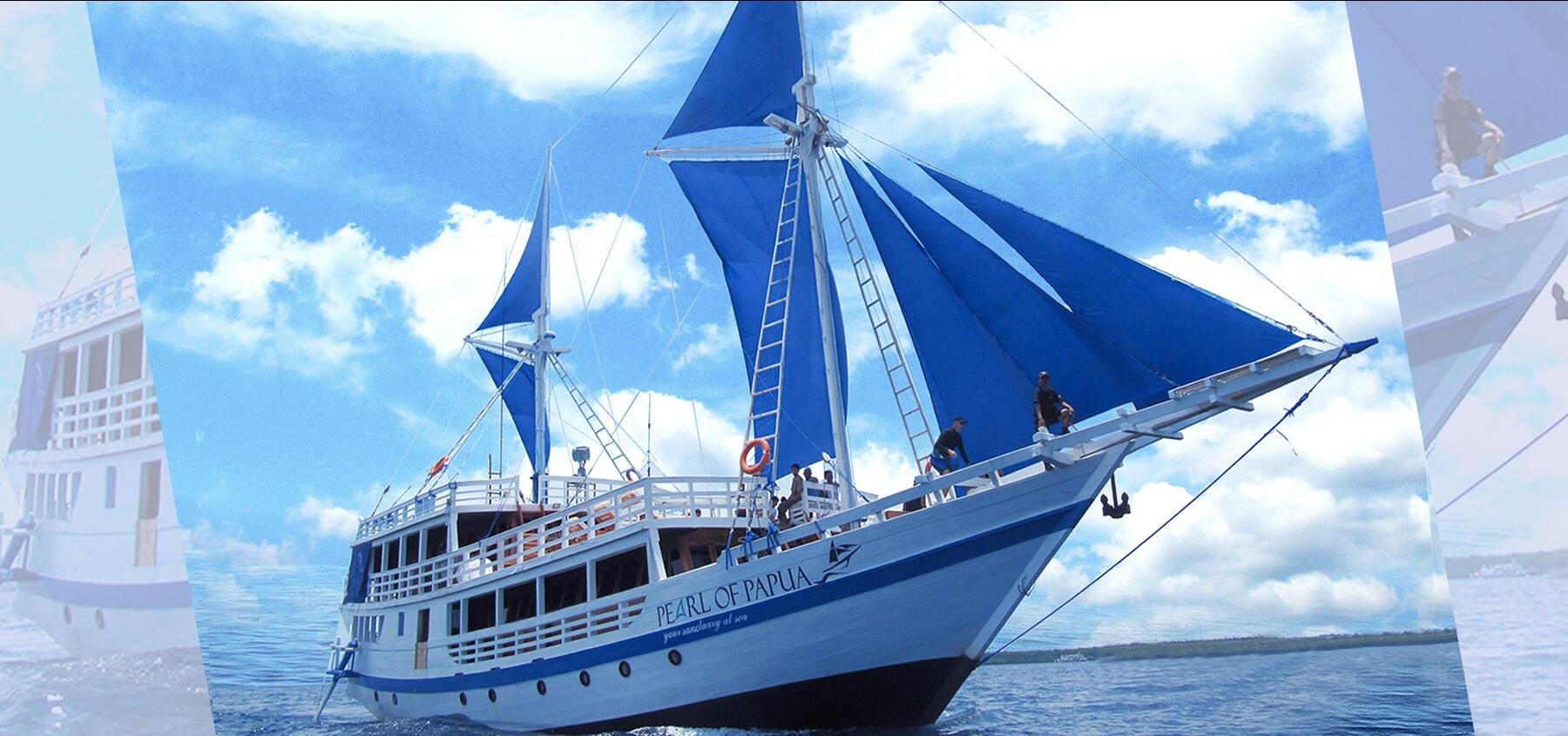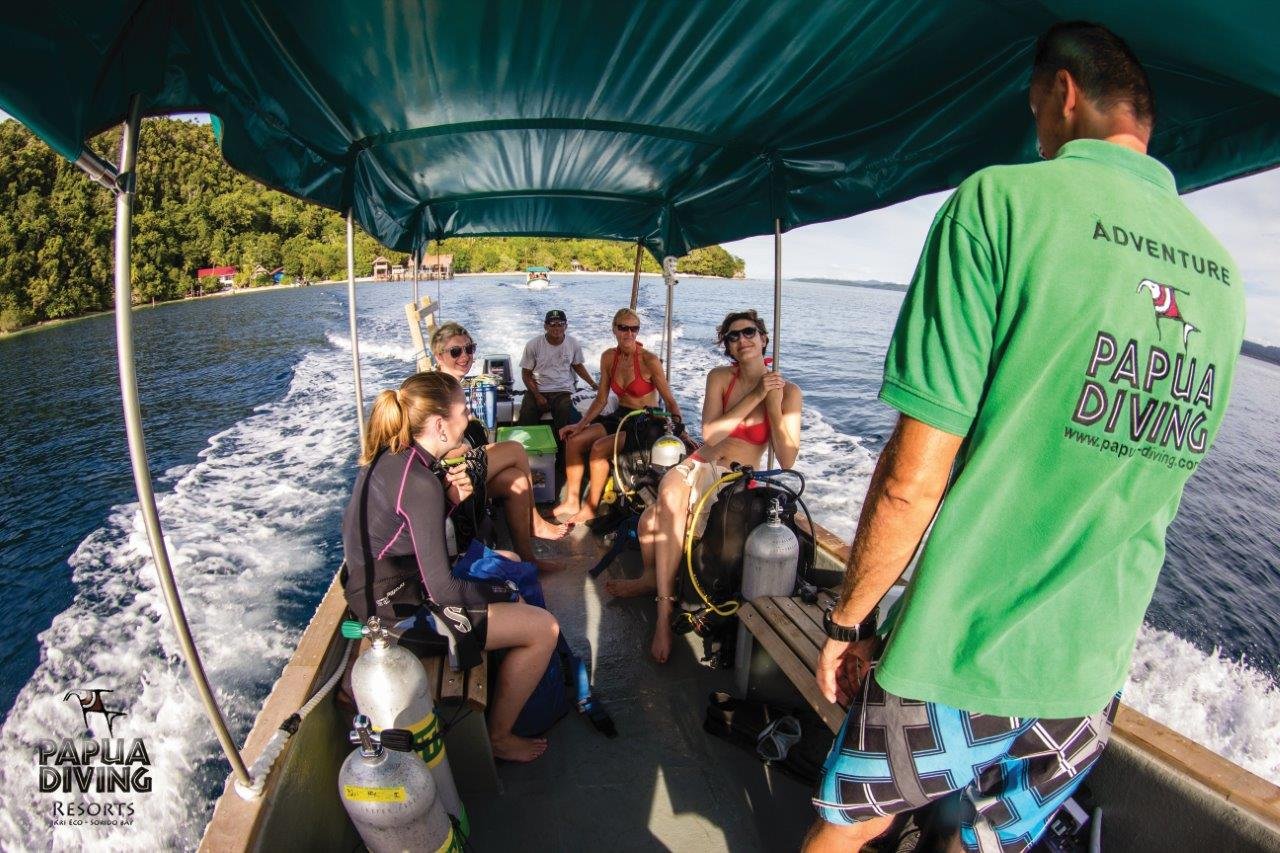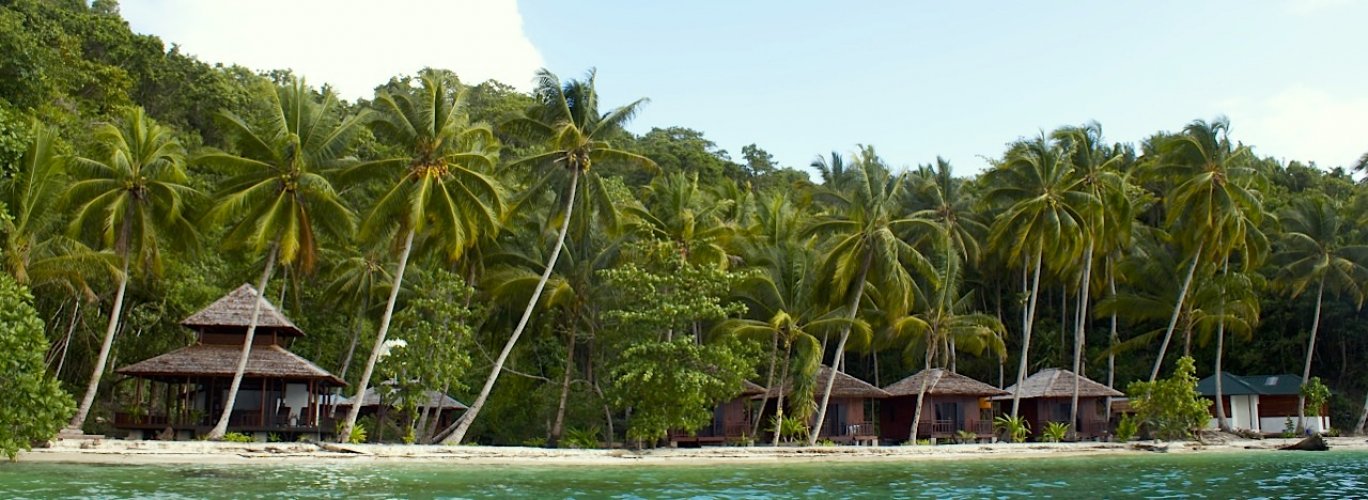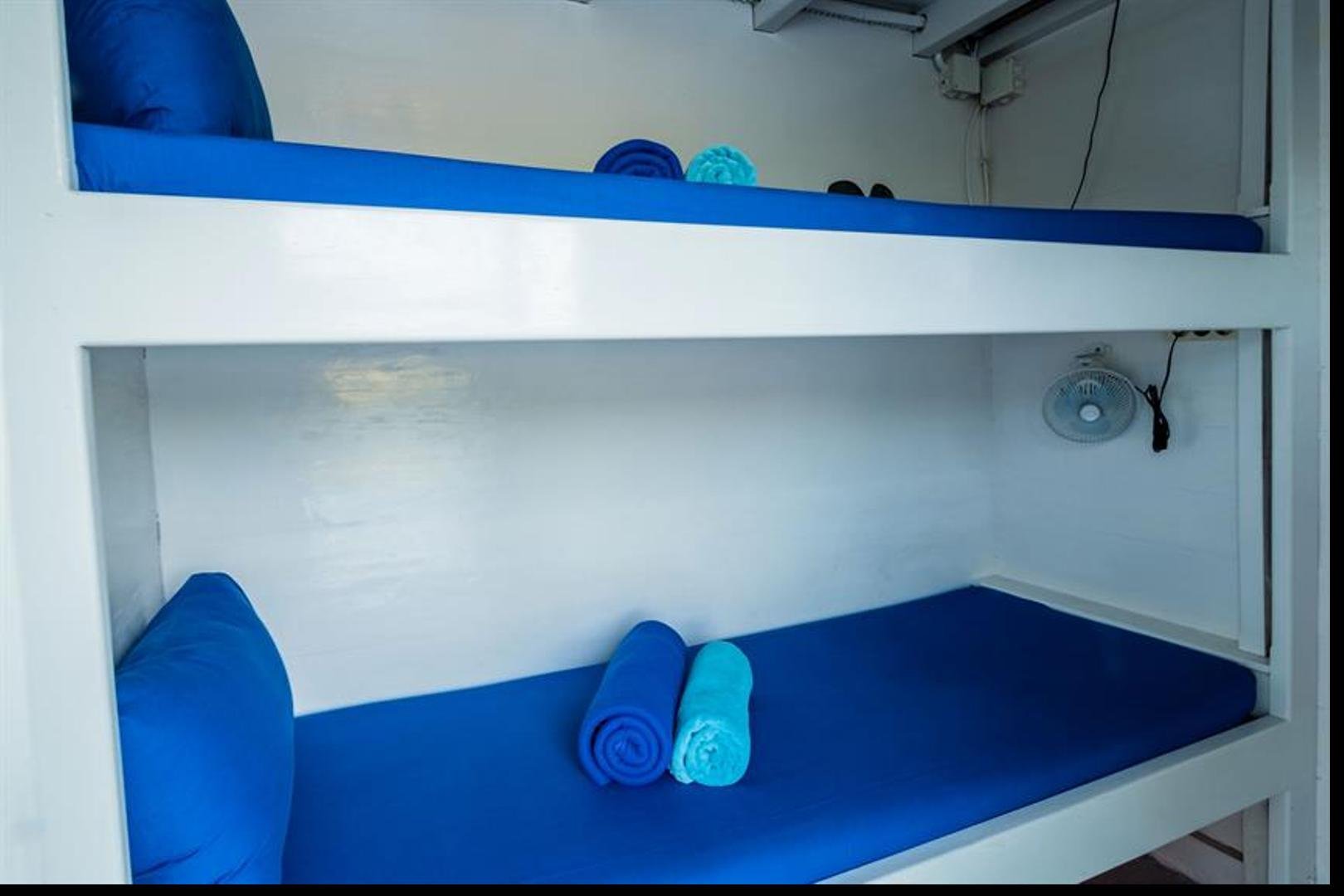Offerte
Offerte
Tour module 7 days diving Raja Ampat - Best of Dampier, Epica liveaboard
The Epica liveaboard is a simple former fishing boat. She will take you for 7 days to the most beautiful dive sites in the Dampier strait, north Raja Ampat. Starting point and finish is Waisai, the capital of the island of Waigeo.
The Epica sails along Dampier Strait, where you have top-notch dive spots like Cape Kri, Gam Islands, the canal and much, much more ... Almost three quarters of the famous hard coral, 1,400 species of reef fish, 13 species of marine mammals and 5 of the 7 known sea turtles are waiting for you here!
The Epica sails along Dampier Strait, where you have top-notch dive spots like Cape Kri, Gam Islands, the canal and much, much more ... Almost three quarters of the famous hard coral, 1,400 species of reef fish, 13 species of marine mammals and 5 of the 7 known sea turtles are waiting for you here!
Target prices 2025
€ 1.750 per person
Departures
2025
22 feb
3 mrt
8, 16 apr
5,23 mei
28 jun
7, 16, 24 jul
1, 9, 17, 25 aug
2, 10, 18, 26 sep
4, 12, 31 oct
8, 16, 24 nov
2, 13, 21, 29 dec
2026
6, 14, 22, 30jan
7, 15, 23 feb
3, 31 mrt
18 apr
16, 24 mei
22 feb
3 mrt
8, 16 apr
5,23 mei
28 jun
7, 16, 24 jul
1, 9, 17, 25 aug
2, 10, 18, 26 sep
4, 12, 31 oct
8, 16, 24 nov
2, 13, 21, 29 dec
2026
6, 14, 22, 30jan
7, 15, 23 feb
3, 31 mrt
18 apr
16, 24 mei
In- and excluding
Including:
•Breakfast, lunch and dinner
•Fruits and snacks
•Coffee, tea and water
•Towel and linen
•16-18 dives according to program
•transfers from Sorong airport to Raja Ampat and vice versa
Exclusive:
•Entrance and harbour fee Raja Ampat (approx € 170)
•Diving and snorkeling equipment
•(soft and alcoholic) drinks
•Gratuities (recommended 10% of the package price)
•Expenses of a personal nature
•Flee
•Travel and cancellation insurance
•Booking costs and contribution Calamity Fund € 30 per booking
•SGR contribution € 5 per person
•CO2 compensation € 22 per person
Extra information liveaboard:
Down payment after reservation is 50%
Cancellation costs up to 45 days before arrival are € 150 per person.
Cancellation costs from 45 days before arrival are 100%
•Breakfast, lunch and dinner
•Fruits and snacks
•Coffee, tea and water
•Towel and linen
•16-18 dives according to program
•transfers from Sorong airport to Raja Ampat and vice versa
Exclusive:
•Entrance and harbour fee Raja Ampat (approx € 170)
•Diving and snorkeling equipment
•(soft and alcoholic) drinks
•Gratuities (recommended 10% of the package price)
•Expenses of a personal nature
•Flee
•Travel and cancellation insurance
•Booking costs and contribution Calamity Fund € 30 per booking
•SGR contribution € 5 per person
•CO2 compensation € 22 per person
Extra information liveaboard:
Down payment after reservation is 50%
Cancellation costs up to 45 days before arrival are € 150 per person.
Cancellation costs from 45 days before arrival are 100%
Offerte
Offerte
Dag 1 Van Sorong naar de liveaboard, de checkduik

And thus, the tale begins.
The Epica crew will meet you at 08.00 in the morning at the JE Meridien Hotel in Sorong, just next to the airport. A short car ride and a ferry ride later, you’ll have reached Waisai and are ready to board the Epica. For guests already staying in the area, the crew meet up in front of the tourist information centre in Waisai at 11am.
Once on board, the crew will make sure all the necessary paperwork is in order, allocate your cabins, set up dive equipment and brief you on boat and dive safety procedures.
After lunch Epica will sail to your first dive site in central Raja Ampat. The check dive is usually at Friwen Bonda, a beautiful reef teeming with colourful fish.
Day 2 till 6 Duiken op Raja Ampat

These days the Epica goes along the dive sites of Dampier Strait. Every day you make an average of 3 dives on the most special dive sites.
Swim face to face with the manta rays, seahorses, wobbegong sharks, barracudas and other beautiful fish above the beautifully healthy coral ...
Dag 7 Terug naar Sorong

Every story comes to an end. But wait – we’re not quite done yet.
You liked Blue Magic? Good, because we are diving it again. Very early in the morning.
Back on board, we gently prepare you for your departure. This includes a debriefing, delicious food, a group photo and plenty of time to gather your items while pondering how your belongings ever fit in your backpack when you left home.
After lunch we say our tearful goodbyes and drop you off at the harbour or, if you decide to over night in Raja Ampat, to teh Scuba Republic resort.
If you are returning to Sorong the same day, you will be ready to board the ferry by 2pm. Expected arrival in Sorong is 4pm.
Offerte
Offerte
Offerte
Offerte
Raja Ampat

Raja Ampat
Raja Ampat is an archipelago in West Papua (former Irian Jaya) and consists of 610, mostly uninhabited islands. The four largest islands are Waigeo in the north, Salawati (southwest of Sorong), Batanta (north of Salawati) and Misool in the southwest. The name Raja Ampat is also based on these four islands and literally translated means "the four kings".Raja Ampat is a relatively unknown area in Indonesia, but this destination is well known among divers. This is due to the wide range of various fish species and fantastic coral reefs, varying from hard to soft coral. But the islands themselves are also impressive. The Raja Ampat Islands have quiet lagoons with crystal white sand and water that varies from bright green to bright blue.
Diving is especially popular in the Dampier Strait. Here you will find numerous dive spots with an incredible amount of coral and fish. Cape Kri, Blue Magic and Manta Point are real eye-catchers.
Misool is also loved for its wide variety of fish and coral.
Raja Ampat is open all year round, but from mid-July to mid-September you are more likely to experience rain and high waves. Misool is closed between mid-June and mid-September.
Raja Ampat has dozens of dive resorts and homestays. The homestays often use local diving schools, such as the Arborek dive shop. The more luxurious diving resorts offer not only more comfort, but also more safety. Sorido Bay resort, Raja Ampat Biodiversity and Papua Explorers are our favorites in the Dampier Strait, Papua Paradise Eco resort off Batanta Island. The Scuba Republic is an excellent middle class resort.
A fast public ferry runs twice a day between Sorong and Waisai on Waigeo Island. Waigeo also has an airport with a daily flight to Sorong.

Liveaboards
Liveaboards usually offer weeklong dive cruises in northern Raja Ampat (Dampier Strait and the northern Wajag karst islands. Longer, often 10-day trips also cover the southern part around Misool. Most liveaboards operate Raja Ampat cruises between September and March April, then dock and sail in the waters around Komodo for the summer season.Video Raja Ampat snorkel cruise
Sorong

Sorong
Sorong is the westernmost city on the island of New Guinea. The city is located on the Sele Strait of the Pacific Ocean on the Vogelkop Peninsula. It is the base for trips to the Raja Ampat Islands.Two hours' drive south of Sorong is the rainforest in the Klasow valley with all kinds of strange birds. You will find different types of Paradise birds and the endemic Cassoway, a peacock or smaller ostrich species.
Sorong is the logistical center of the oil and gas industry around West Papua, which manifests itself in growing wealth and economic prosperity. The city has over 50,000 inhabitants, making it one of the larger cities of Papua. Most of the inhabitants are transmigrants from Sulawesi, Java and other islands.
Directly off the coast is the island of Jefman, which until 2012 had the airport of Sorong. The new airport has daily connections with Jakarta, Makassar, Manado, Ambon and several cities in Papua, among others.
Sites to see
The city has a nice beach promenade and some historical buildings dating from the Dutch oil period. It’s a city full of contrasts. The following sights are close to the city:Cape Cassuwary: 3 km from Sorong, beach with coralreefs;
Crocodile island, 500 metre out of the beach;
The island Kafiau;
The island Matan;
The hot springs of Klaijili, 60 km from Sorong;
A protected forest area, 15 km from Sorong;
Sorong is the most important gateway for trips to the nearby Raja Ampat-islands and the coralreefs of the Coral Triangle.
(source: Wikipedia)
Dive spots north Raja Ampat

Divie spots North Raja Ampat
These days you can dive and snorkel at will in the most beautiful area of Indonesia.Between November and March a diving- or a snorkelling trip at Manta Sandy is a must! But don’t forget to admire the seahorses, wobbegong sharks, barracudas and other wonderful fish above the marvellous healthy coral as well.
Besides diving and snorkelling you can book excursions to the birds of paradise or a traditional village on the spot. Or just chill out on the beach…

Cape Kri
One of the favorite dives, Cape Kri is Sordio Bay’s house reef and less than 3 minute by boat from Kri Eco Resort. This is the dive site that put Raja Ampat on the map when Dr Gerry Allen smashed his record for total number of fish species on a single tank dive: 374 different species!The world-record holding Cape Kri, with a record count of 374 different species in one dive counted by Dr. G. Allen, is just a 1 minute boat ride from our jetty. At the Northeast point of Kri island the currents sweep into a channel between Kri and the small island of Koh. At this point beneath waters churning in the current, huge schools of Big-eye trevallies, Barracudas and Snappers can be seen hanging over the drop-off. At the base of the reef at 38 meters an ancient snagged anchor rests next to a bommie with a dense school of Banded sweetlips. A large shallow coral garden crowns the reef top with blacktip reef sharks patrolling amongst the overlapping maze of hard corals with feeding hawksbill turtles. Car-sized Queensland groupers down to the diminutive ever-present pygmy seahorse can be seen on this phenomenal and always-surprising dive site! Dawn and dusk are feeding time so divers can experience this site at its awe-inspiring best.

Blue magic
Only 15 minutes from Kri Island, this small pinnacle has almost everythingFrom Wobbegong sharks to tiny 2cm Denise Pygmy seahorses. The reef top is covered in hard coral with some big coral heads and some tabling Acropora corals well over 3 metres across. There is a resident school of Big eye Trevallies and many large Barracuda. Green Turtles can be found here as well as Black Tips, White Tips and the occasional Grey Reef Sharks. If you are very lucky even a Giant Manta Ray. The magnificent dive ends with a blue water safety stop drifting over and away from the reef.

Sardines
Only 10 mins from Kri Island, this submerged reef with a reef top at 5 metres, contains a very high biomass, one of the highest in Raja Ampat.Sardines reef is quite simply one of the best reef dives in the world, where divers witness the phenomenal diversity of Raja Ampat at full force. Where the current strikes this offshore reef and splits, a dazzling array of fish congregate, audibly swarming fusiliers spin above, pursued by huge giant trevallies, packs of Bluefin jacks and huge Spanish mackerels. Batfish gather in the hundreds, while multitudes of schooling bannerfish feed in the current. Grey reef sharks, blacktips and whitetips can also be seen along with the wobbegong waiting in ambush on the sea floor. Coral bommies dot the slope covered with many colourful species of dendronephya soft corals and up to three separate species of Pygmy seahorses can be found amongst them. On the current-swept reef top a resident school of thirty massive bumphead parrotfish crunch on the coral, keeping the divers company on a safety stop who hang from their reef-hooks like kites in the wind. Upon surfacing, many divers comment that this is the best dive they have ever done!! Photographers love this dive site and have to return to change from wide angle to macro!

Manta Sandy
Only 25 mins from Kri Island, this sandy slope is famous for its Manta Rays. It is a cleaning station where they come in to get cleaned.If the many reefs are not enough this area also boasts some of the best manta diving in the world! There are two main manta sites just half an hour away. One, Manta Sandy, is a cleaning station where up to 10 mantas can be seen vying for a position above the two rocks where wrasses clean these giants. We get enormous 4 meter wide black mantas, looking like a negative photographic image, their gills are highlighted in white, along with the other more common white-bellied variety. Another site nearby, Manta Slope, mantas circle above in the sun while divers hook onto the reef while the current arcs overhead and down the steep slope below. Divers can be caught unaware while giant demonic-looking black mantas cruise by behind them. This trip is out of our 10km range, but is offered once a week without any fuel surcharges!

The Passage
As seen in many articles, including recently by David Doubilet in the Sept 2007 National Geographic, the passage is a completely unique dive site. The narrow canyon 40 minutes away between Gam and Waigeo can be described as river flowing between the two Islands, but also a marine environment, a haven of peculiar and unique microhabitats.This is a place where experienced divers and photographers enjoy the utterly different experience of diving in this truly one-of-a-kind location. Above water the sheer limestone cliffs make this a place where the sightseeing above water is also excessively beautiful. Guests combine this trip visiting the labyrinthine Hidden Bay, a maze of towering islets, and Kabui Bay where literally hundreds of mushroom islands create staggering scenery. This trip is out of our 10km range, but is offered once a week without any fuel surcharges!

Arborek Jetty
Directly below the jetty of the mini-island of Arborek you will find large schools of Sweetlips, Barracudas and hunting Mackerel. The soft coral also hides Pipefish, Snappers, Batfish, Bumphead cattlefish and if you are at the right time and place you can also spot the Wobbegong.Waisai



















